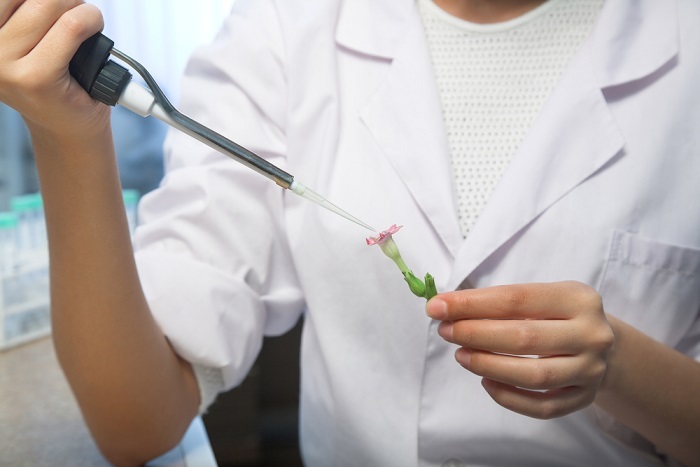
 Data Structure
Data Structure Networking
Networking RDBMS
RDBMS Operating System
Operating System Java
Java MS Excel
MS Excel iOS
iOS HTML
HTML CSS
CSS Android
Android Python
Python C Programming
C Programming C++
C++ C#
C# MongoDB
MongoDB MySQL
MySQL Javascript
Javascript PHP
PHP
- Selected Reading
- UPSC IAS Exams Notes
- Developer's Best Practices
- Questions and Answers
- Effective Resume Writing
- HR Interview Questions
- Computer Glossary
- Who is Who
What is Somoclonal Variation?
Introduction
Plant tissue culture is the in vitro cultivation of plant cells, tissues, or organs on artificial nutrient media under sterile conditions. It has become a significant tool in plant science and has played a vital role in the production of improved plant varieties. The ability to produce genetically identical plantlets on a large scale has been of great benefit to the agriculture industry. However, plant tissue culture also has its limitations, and one of them is somaclonal variation.

Somaclonal variation is a term used to describe the genetic variation that arises during the process of plant tissue culture. It is an important issue in plant tissue culture because it can result in the production of plants with undesirable traits, such as reduced growth rate, abnormal morphology, altered pigmentation, and reduced yield. However, somaclonal variation can also lead to the production of plants with desirable traits, such as disease resistance, improved quality, and increased yield.
Causes of Somaclonal Variation
Somaclonal variation can occur due to various factors, such as genetic and epigenetic changes, culture conditions, and the nature of the explants used for culture. Genetic changes refer to mutations that occur in the DNA sequence of the plant cells during tissue culture. These mutations can be caused by errors in DNA replication, DNA damage, or the activation of transposable elements. Epigenetic changes refer to alterations in gene expression that are not caused by changes in the DNA sequence. These changes can be caused by modifications to the DNA, such as methylation, or modifications to histone proteins, which affect the way the DNA is packaged.
Culture conditions can also play a role in somaclonal variation. Factors such as the type of media used, the concentration of plant growth regulators, the duration of culture, and the type of explant used can all influence the degree of somaclonal variation.
For example, using high concentrations of plant growth regulators can increase the frequency of somaclonal variation, while using low concentrations can reduce it. The nature of the explant used can also influence somaclonal variation. Explants that are more differentiated, such as leaves or roots, are more likely to produce somaclonal variation than undifferentiated explants, such as callus.
Impact of Somaclonal Variation
Somaclonal variation can have both positive and negative impacts on plant tissue culture. On the positive side, somaclonal variation can lead to the production of plants with desirable traits, such as disease resistance, improved quality, and increased yield. For example, somaclonal variation has been used to develop disease-resistant varieties of potato and tomato. In addition, somaclonal variation has been used to develop varieties of sugarcane with improved yield and quality.
On the negative side, somaclonal variation can lead to the production of plants with undesirable traits, such as reduced growth rate, abnormal morphology, altered pigmentation, and reduced yield. These undesirable traits can be caused by mutations in genes that are important for plant growth and development. For example, somaclonal variation has been shown to cause reduced yield in rice and cotton. In addition, somaclonal variation has been shown to cause abnormal morphology in plants such as petunia, tobacco, and tomato.
Detection and Prevention of Somaclonal Variation
The detection of somaclonal variation can be challenging because the mutations that cause it can occur at any point during tissue culture. However, there are several methods that can be used to detect somaclonal variation, such as cytological analysis, molecular markers, and phenotypic analysis.
Cytological analysis involves the examination of the chromosomes of the plant cells to detect any changes in their number or structure. Molecular markers can be used to detect changes in the DNA sequence of the plant cells. Phenotypic analysis involves the examination of the physical characteristics of the plants to detect any changes in their morphology, growth rate, pigmentation, or yield.
Prevention of somaclonal variation can be achieved by optimizing the culture conditions and the selection of appropriate explants. Culture conditions should be carefully controlled to avoid any stress that can lead to somaclonal variation. The concentration of plant growth regulators should be optimized to promote the growth and development of the plant cells while minimizing the risk of somaclonal variation.
The duration of culture should be kept as short as possible to reduce the risk of accumulated mutations. The type of explant used should be carefully selected to minimize the risk of somaclonal variation. Undifferentiated explants, such as callus, are less likely to produce somaclonal variation than more differentiated explants, such as leaves or roots.
Conclusion
Somaclonal variation is a significant issue in plant tissue culture that can lead to the production of plants with undesirable traits, such as reduced growth rate, abnormal morphology, altered pigmentation, and reduced yield. However, somaclonal variation can also lead to the production of plants with desirable traits, such as disease resistance, improved quality, and increased yield.
The detection of somaclonal variation can be challenging, but several methods can be used to detect it, such as cytological analysis, molecular markers, and phenotypic analysis. Prevention of somaclonal variation can be achieved by optimizing the culture conditions and the selection of appropriate explants. Plant tissue culture remains a valuable tool in plant science, and the issue of somaclonal variation should be carefully considered when using this technique.

